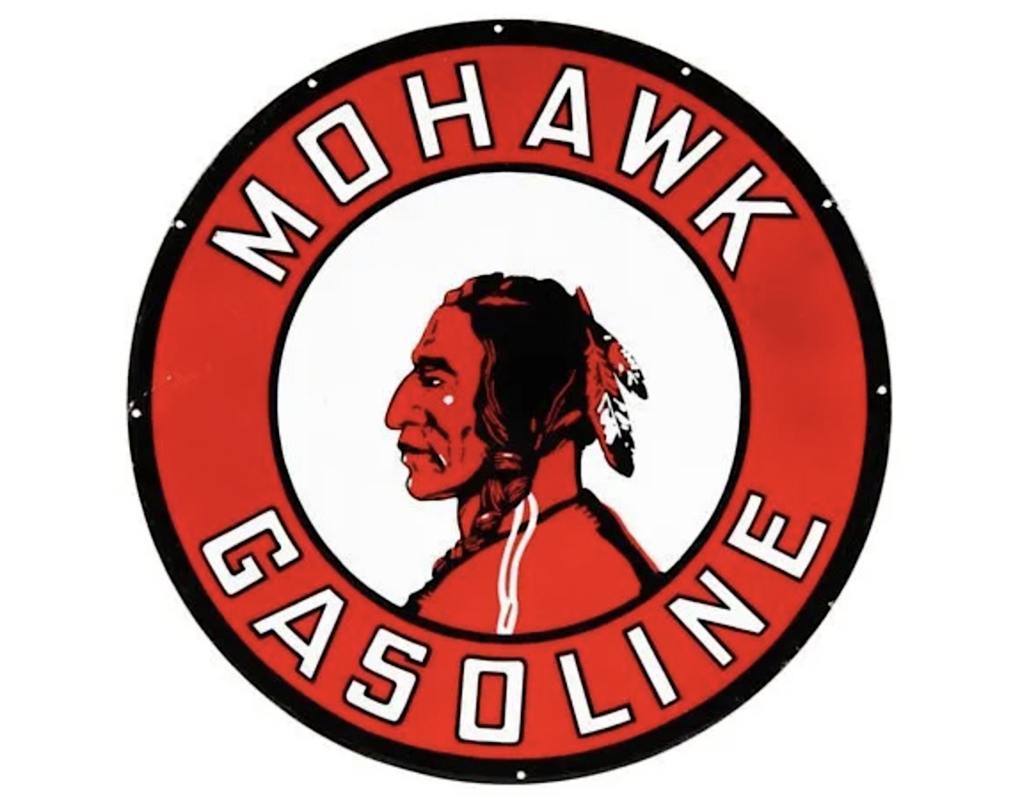
NEW YORK — Back when cars were fairly new, gas stations were few and far between. To attract customers, gas stations touted themselves with bright, colorful signage to serve as a beacon — sometimes literally — to drivers day and night. Vintage gas station memorabilia is highly collectible, and the brands that collectors like most are early examples with striking graphics deployed in the service of now-defunct brands. Mohawk Gasoline certainly fits the bill.
The Mohawk Oil Company was a Bakersfield, California-based independent refiner as well as gasoline and motor oils marketer that was active from the 1930s through 1970, when it was bought out. Mohawk Gasoline items tend to feature a profile of a Native American man with a feather fixed in his hair, though some show him with a drooping feather instead of a raised one. The Mohawk Oil Company commissioned a wide range of merchandise, fixtures and fittings to support its products, from oil cans to gas pumps to promotional materials such as paperweights, usually dominated by a palette of red or orange hues.
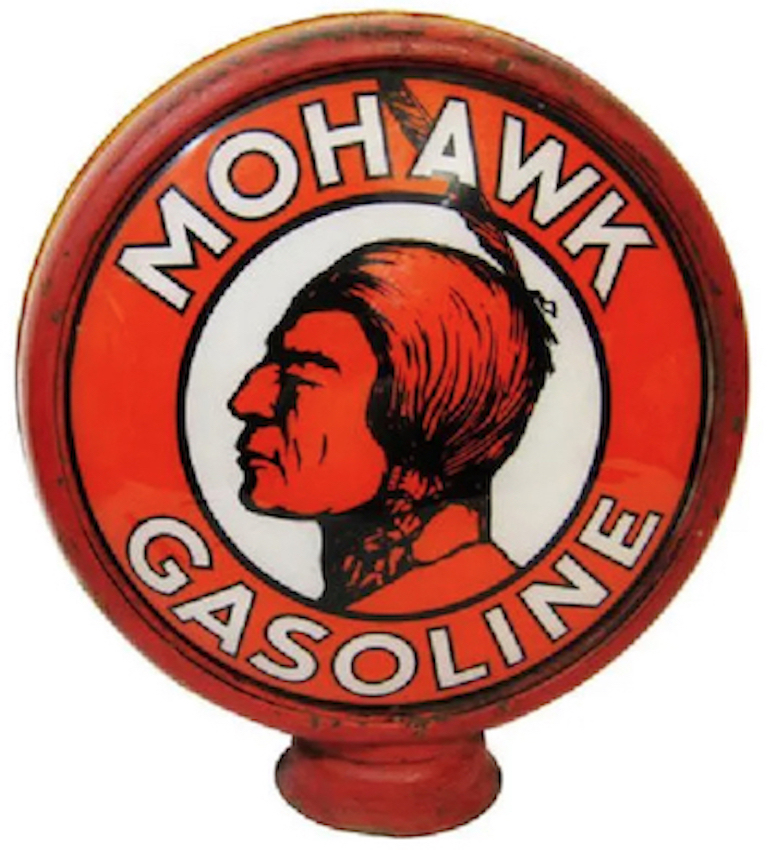
The Holy Grail objects of Mohawk Gas memorabilia are the signs — some porcelain, others neon — that beckoned drivers to pull over and refuel. The best double-sided examples in good condition bring top prices, some in excess of $100,000, but standout single-sided examples have realized more than $50,000. Pre-WWII-era signs are particularly desirable and those with great graphics typically command record and near-record prices.
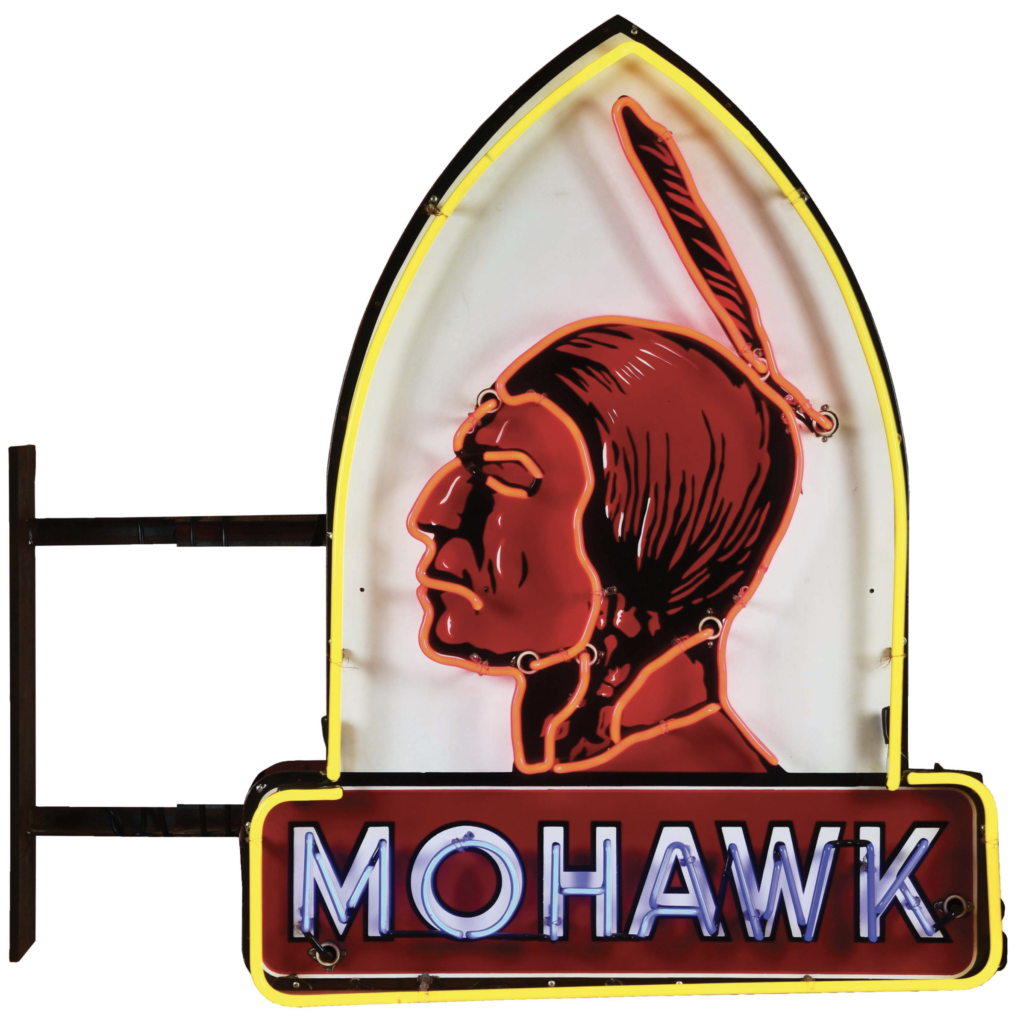
Condition is always key; collectors look for signs that retain good color and gloss. The Mohawk Oil Company appears to have relied on the Burdick Sign Company of Chicago to fill its needs, and Mohawk signs made from porcelain were fortified with strong colors and an extra measure of weatherproofing. (Porcelain signs were common at gas stations up through the 1950s.)
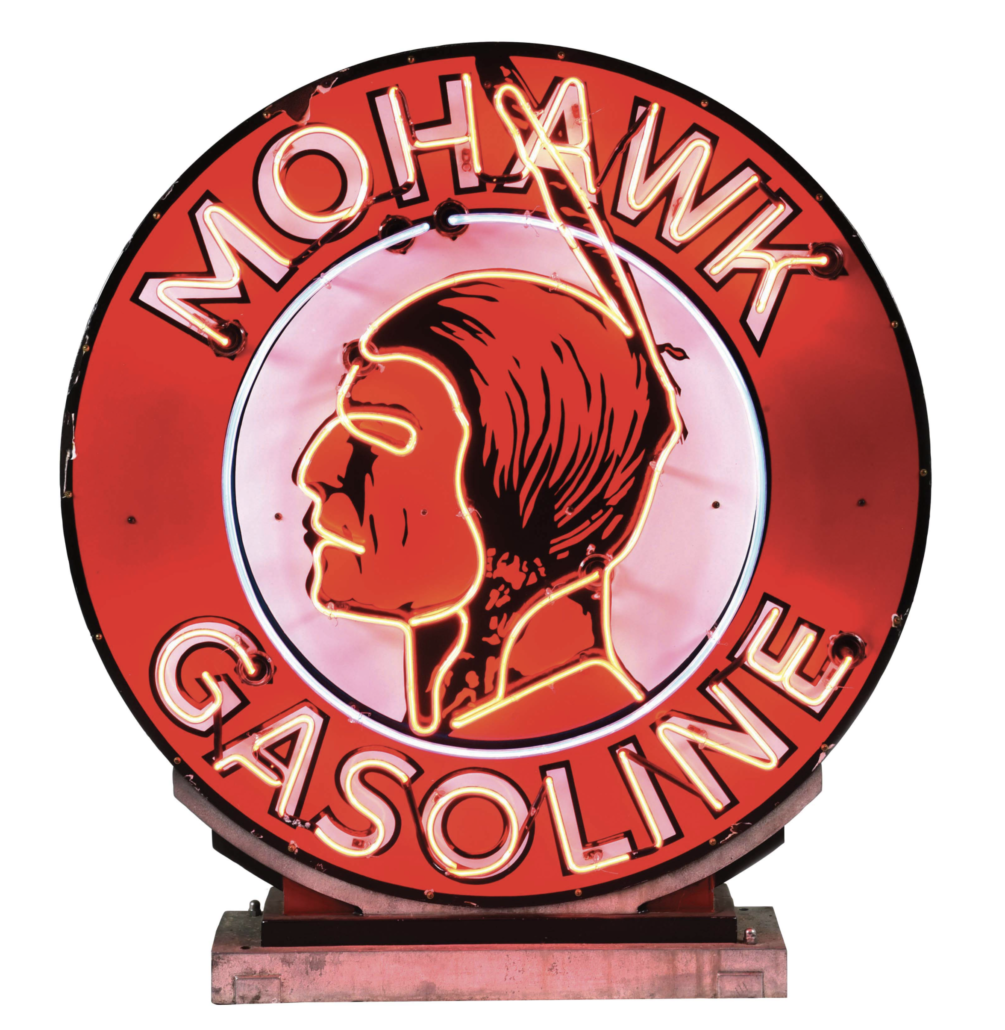
Gasoline pumps are also eagerly sought-after. The design and appearance of gas pumps has evolved (some, thinking of the boxy, decidedly dull-looking dispensers of today, might say they’ve devolved) in the decades since the widespread adoption of automobiles. In the early days, most pumps stood around 10 feet tall and were crowned with colorful globes. Gas pumps were originally clear to allow customers to see the gas.
“The designers of gas pumps soon added an aesthetic appeal to attract consumers to gas stations,” according to the website of the Automobile Driving Museum in El Segundo, California. “Through the 1920s, the colors and ornate designs of gasoline pumps stretched around the globe. Everywhere, bright colored pumps full of gasoline were at every station.”
While the more original a piece of petroliana is, the better, an appealing object that has benefitted from a sensitive rejuvenation can find success at auction. Even though it was restored and had been fitted with a reproduction Mohawk globe sign, a Bowser Model #97 clockface gas pump still earned $6,500 plus the buyer’s premium in April 2017 at Dan Morphy Auctions.
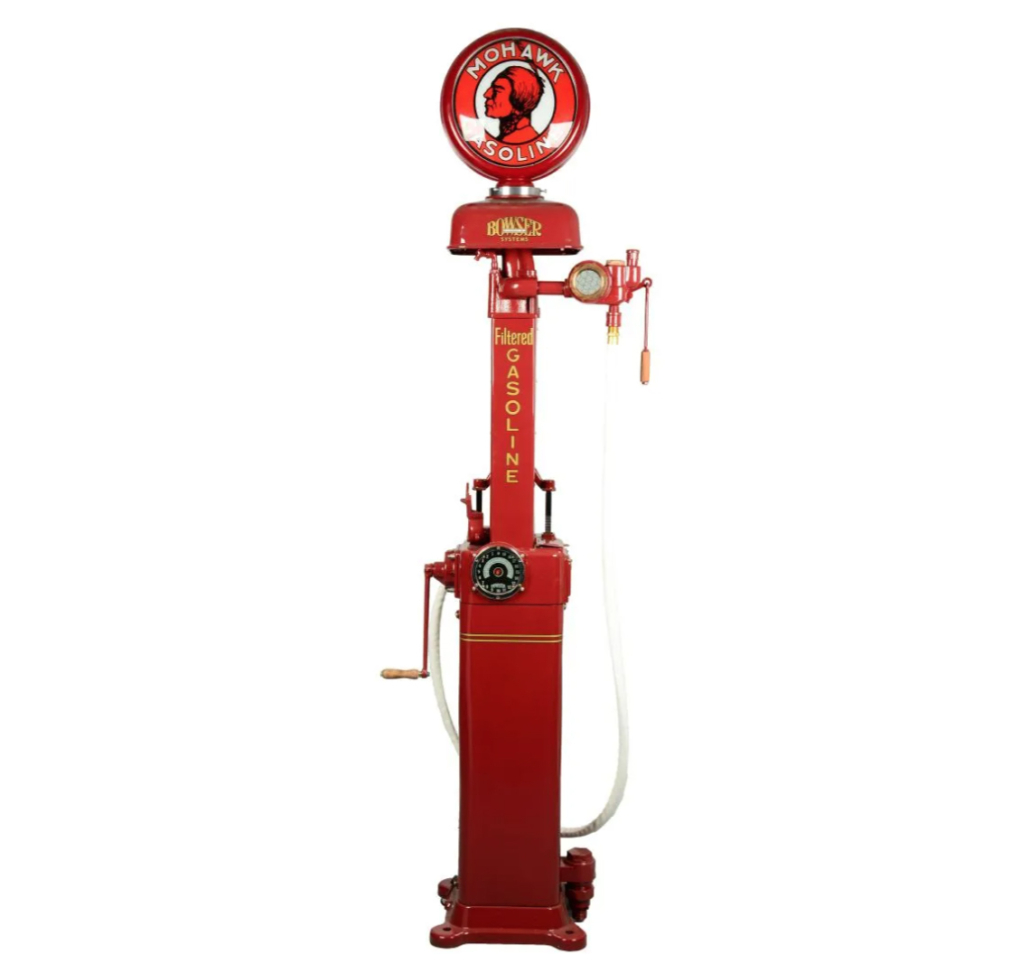
The globes that sit atop vintage gas pumps are among the most delightful features of the vintage machines. Most brands, Mohawk’s included, featured round globes on their gas pumps, but Shell had theirs fashioned in the shape of a clam shell. Mohawk globes featuring silk-screened lenses that depict the Native American brave logo are prized by collectors. Examples that have intact lenses as well as colors and graphics that have avoided the pitiless ravages of nature are readily scooped up. If they are in prime condition, they can earn sums in the low five figures, as evidenced by a Mohawk Gas 15-in gas pump globe that sold for $11,500 plus the buyer’s premium in October 2017 at Mecum Auctions.
Gas and petroliana advertising took off as a collecting genre in the 1980s, and prices climbed in the decades that followed as the choicest examples become harder to find. The good news for collectors is that some of those early collectors’ collections are starting to return to auction. Petroliana sales taking place now and during the next decade or so might represent the best buying opportunities to enhance — or start — a collection of Mohawk Gasoline memorabilia.
# # #


